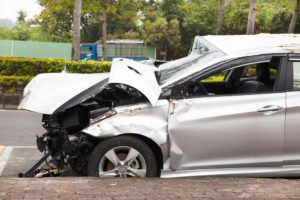
Automotive safety technologies have advanced greatly over the last decade. With so many breakthroughs, it is easy to overlook the critical role that tires play in accident prevention. As the only points of contact your car has with the road, the performance of your tires can be the difference between causing a serious accident and reaching your destination unscathed.
You may already know the importance of having adequate tire tread, but maintaining the appropriate tire pressure is just as crucial. A 2008 study published by Consumer Reports found that tire problems cause about 5 percent of all accidents. Many of those wrecks could have been prevented if the vehicles involved had been equipped with a tire pressure monitoring system (TPMS).
Unfortunately, even the most advanced safety technologies will not make your vehicle immune to accidents. If you were injured or lost a loved one in a collision with a negligent driver, contact Laborde Earles Injury Lawyers to discuss your case.
Our lawyers have 350 years of combined experience representing the injured. Call (337) 777-7777 to arrange a free initial consultation with an accident attorney in Lafayette.
What Is the Difference Between Indirect TPMS and Direct TPMS?
There are two types of tire pressure monitoring systems: indirect and direct. As Bridgestone explains, indirect TPMS use sensors in the anti-lock braking system to calculate wheel speed. If a wheel is spinning faster than usual, this indicates that the tire pressure is low, and the driver will be alerted via a visual warning on the dashboard.
Direct TPMS, however, employ sensors inside the tires to calculate the internal pressure and temperature. The data gathered by these sensors is analyzed by a centralized module to determine if the pressure is low.


Laborde Earles injury was great for me they took care of me very fast and professional. If for any reason I need legal help they will be who I use.
ClientWhich Type of TPMS Is Better: Direct or Indirect?
Each type of TPMS has its advantages and disadvantages. Direct tire pressure monitoring systems tend to be more accurate. They are also easy to synchronize after rotating or replacing the tires. However, direct TPMS are more expensive than indirect TPMS.
In addition to being more affordable, indirect TPMS are easier to maintain. As previously mentioned, though, they are less accurate than direct TPMS – especially if the tires have uneven tread. Also, indirect TPMS must be reset every time you rotate or inflate the tires.
Tire pressure monitoring systems and other safety technologies undoubtedly reduce the risk of crashing. Unfortunately, the average age of vehicles on U.S. roads is 11.6 years old, so the cars you encounter on your daily commute are unlikely to be equipped with the most advanced safety features.
Even with the most recent technologies, nobody is immune to accidents. If you were injured by a drunk, distracted, or negligent motorist, turn to Laborde Earles Injury Lawyers to discuss your options for recovering compensation.
Our attorneys will help you avoid costly mistakes such as making a recorded statement to the insurance company, accepting a settlement too early, or overlooking future damages. Call (337) 777-7777 today to schedule a free consultation with a car wreck lawyer in Lafayette.




